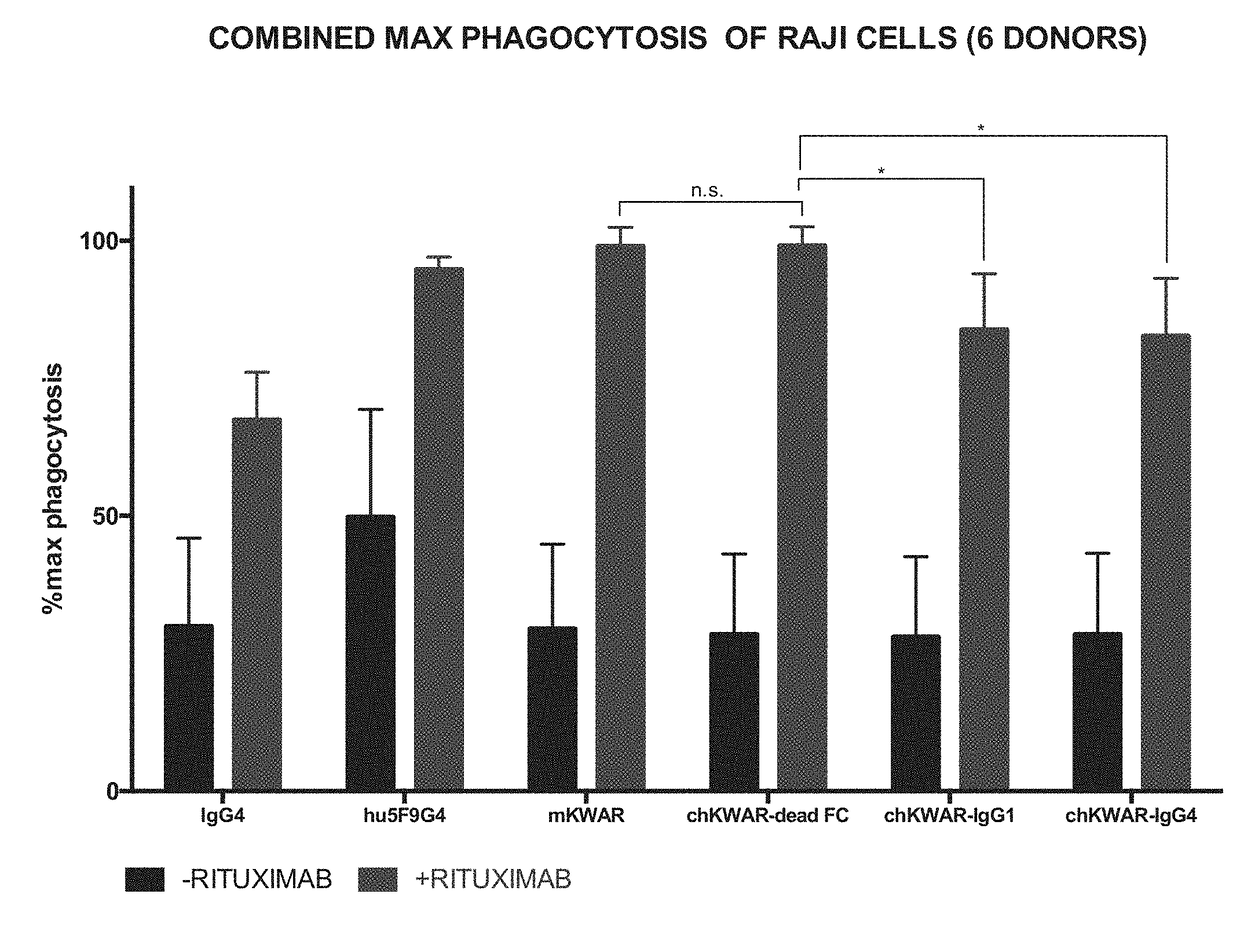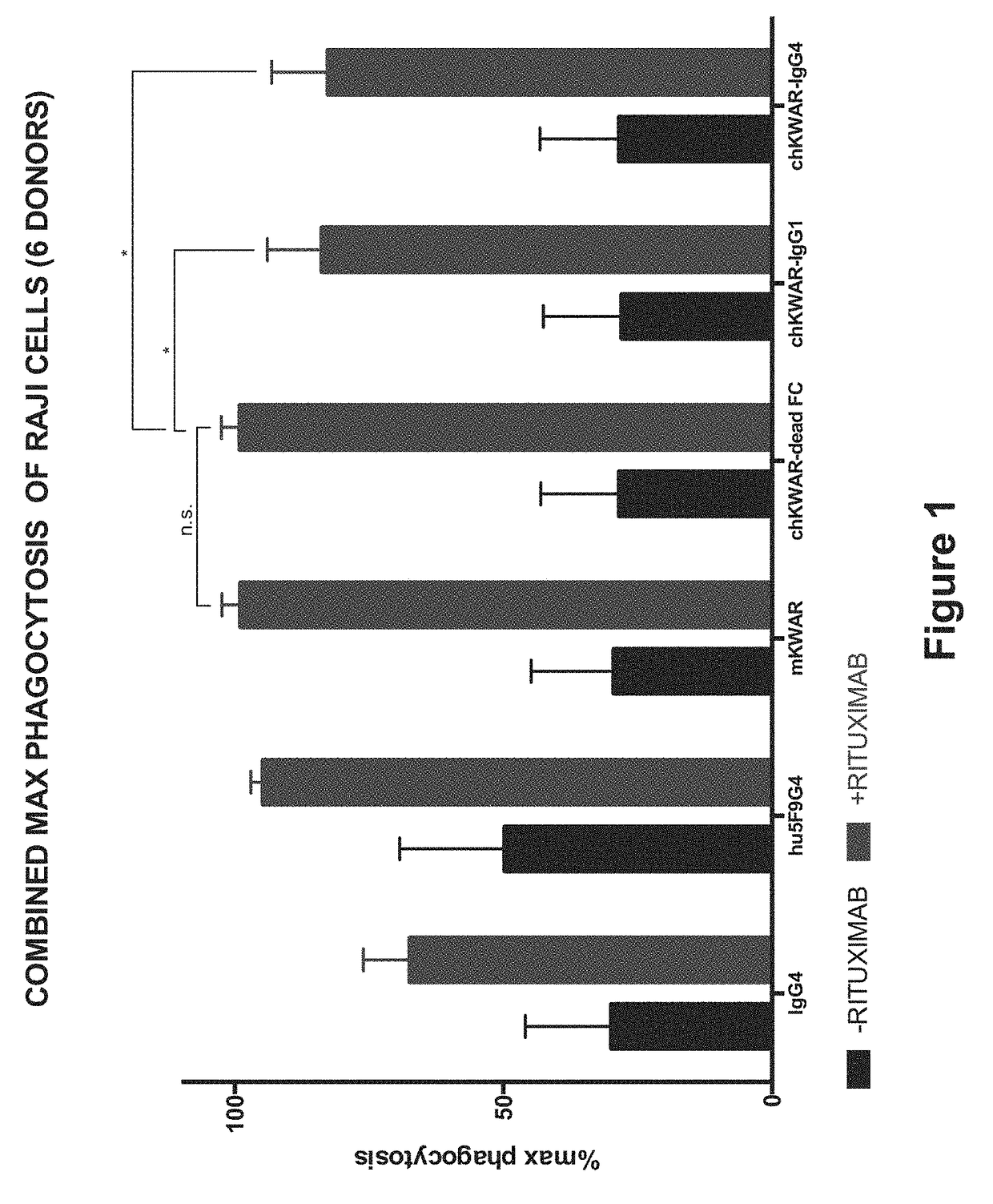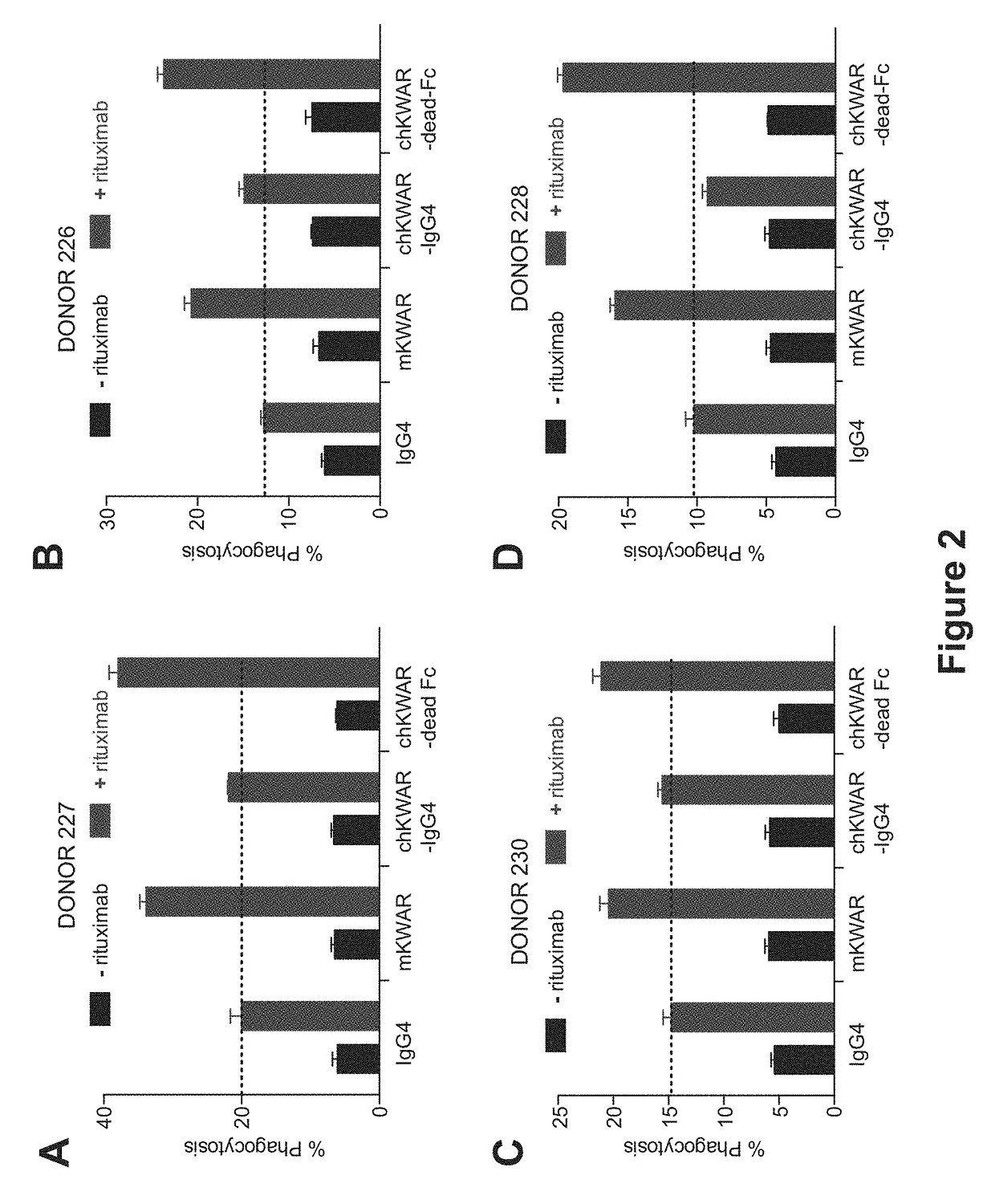Disrupting FC Receptor Engagement on Macrophages Enhances Efficacy of Anti-SIRPalpha Antibody Therapy
- Summary
- Abstract
- Description
- Claims
- Application Information
AI Technical Summary
Benefits of technology
Problems solved by technology
Method used
Image
Examples
example 1
[0140]Blocking the CD47-SIRPα pathway mediates phagocytosis of cancer cells and synergizes with cancer-targeting monoclonal antibodies. Blocking agents include, for example, antibodies that specifically bind to CD47, and antibodies that specifically bind to SIRPα. The latter may have certain advantages in therapeutic applications because expression of SIRPα is more restricted than CD47. This may impact pharmacokinetics and the toxicology profile.
[0141]Following administration to a patient, a desirable agent will retain biological activity for a period of time sufficient to effect a therapeutic benefit. For example, in the treatment of cancer and other chronic conditions, a half like of days to weeks may be preferred. Antibodies comprising an Fc region can readily achieve this level of stability, which is thought to be mediated, at least in part, by interaction of the Fc region with the low affinity receptor, hFcRn, which is involved in recycling and transport of IgG.
[0142]Another de...
example 2
[0147]Anti-SIRPα Antibodies with Reduced FcγR Binding for Phagocytosis of NHL Cells by Human Macrophages in Combination with Rituximab In Vitro.
[0148]Anti-human SIRPα antibodies comprising an engineered Fc region, as discussed in Example 1, are assessed for the ability to enable phagocytosis of human NHL cell lines, primary NHL cells, and normal peripheral blood (NPB) cells by human macrophages in vitro. NHL cells are incubated in the presence of IgG1 isotype control or anti-CD45 IgG1 antibody, and compared to the activity in the presence of a humanized anti-SIRPα antibody with a wild-type or engineered N297A Fc region, in the presence of rituximab. The phagocytosis of the tumor cells under these conditions is measured.
[0149]Cell Lines.
[0150]A Burkitt's lymphoma cell line (Raji) and a DLBCL cell line (SUDHL4) are obtained from the American Type Culture Collection or generated in the lab. The NHL17* cell line is generated from a patient with DLBCL by culturing bulk cells in vitro wit...
example 3
[0159]Anti-SIRPα antibodies with reduced FcγR binding for phagocytosis of colorectal cancer cells by human macrophages in combination with anti-EGFR in vitro. Cancer Cells. DLD1 cells (ATCC), HT29 cells (ATCC), SW620 cells (ATCC), SW48 cells (ATCC), LS174T cells (ATCC), HCT116 cells (ATCC), and CACO-2 cells (ATCC) are cultured in RPMI (ThermoFisher S.) (DLD1), EMEM (ThermoFisher S.) (CACO-2, LS174T), McCoy's 5A (ThermoFisher S.) (HT29, HCT116), or Leibovitz's L-15 (ThermoFisher S.) (SW48, SW 620) supplemented with 10% fetal bovine serum (Omega Scientific), 100 U / mL penicillin and 100 μg / mL streptomycin (ThermoFisher S). GFP-luciferase+ DLD1 cell line was generated by transduction using a pCDH-CMV-MCS-EF1 puro HIV-based lentiviral vector (Systems Biosciences) engineered to express an eGFP-luciferase2 (pgl4) fusion protein. Stable lines were created by sorting for GFP expression on FACSAria 11 cell sorters (BD Biosciences). Tumor cells were transduced overnight with lentivirus in cult...
PUM
| Property | Measurement | Unit |
|---|---|---|
| Fraction | aaaaa | aaaaa |
| Composition | aaaaa | aaaaa |
| Therapeutic | aaaaa | aaaaa |
Abstract
Description
Claims
Application Information
 Login to View More
Login to View More - R&D
- Intellectual Property
- Life Sciences
- Materials
- Tech Scout
- Unparalleled Data Quality
- Higher Quality Content
- 60% Fewer Hallucinations
Browse by: Latest US Patents, China's latest patents, Technical Efficacy Thesaurus, Application Domain, Technology Topic, Popular Technical Reports.
© 2025 PatSnap. All rights reserved.Legal|Privacy policy|Modern Slavery Act Transparency Statement|Sitemap|About US| Contact US: help@patsnap.com



